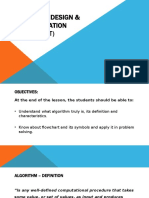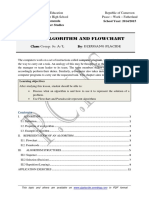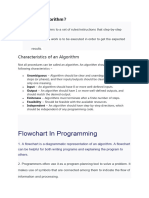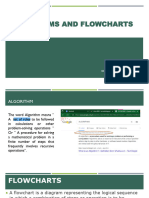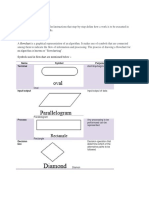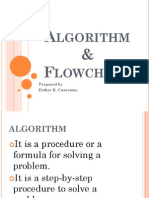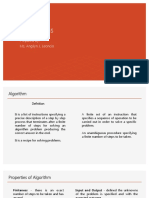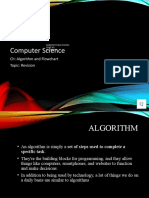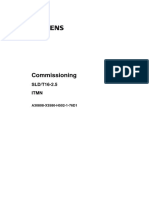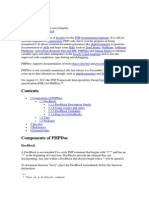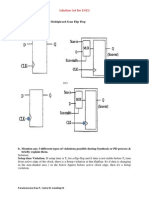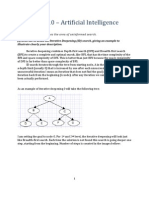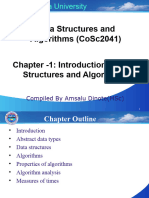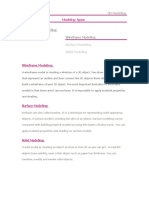0% found this document useful (0 votes)
368 views7 pagesAlgorithm Design & Representation (Flowchart)
The document discusses algorithm design and representation using flowcharts. It defines an algorithm as a well-defined computational procedure that takes inputs and produces outputs. The key characteristics of algorithms are that they have inputs, outputs, definiteness, finiteness, and effectiveness. Flowcharts use common symbols like ovals, arrows, parallelograms, rectangles, and diamonds to visually represent the steps and logic flow of an algorithm. An example flowchart is given to demonstrate how it can represent a simple algorithm that checks if the sum of two numbers is less than 5.
Uploaded by
John Oliver JamangCopyright
© © All Rights Reserved
We take content rights seriously. If you suspect this is your content, claim it here.
Available Formats
Download as PPTX, PDF, TXT or read online on Scribd
0% found this document useful (0 votes)
368 views7 pagesAlgorithm Design & Representation (Flowchart)
The document discusses algorithm design and representation using flowcharts. It defines an algorithm as a well-defined computational procedure that takes inputs and produces outputs. The key characteristics of algorithms are that they have inputs, outputs, definiteness, finiteness, and effectiveness. Flowcharts use common symbols like ovals, arrows, parallelograms, rectangles, and diamonds to visually represent the steps and logic flow of an algorithm. An example flowchart is given to demonstrate how it can represent a simple algorithm that checks if the sum of two numbers is less than 5.
Uploaded by
John Oliver JamangCopyright
© © All Rights Reserved
We take content rights seriously. If you suspect this is your content, claim it here.
Available Formats
Download as PPTX, PDF, TXT or read online on Scribd
/ 7
